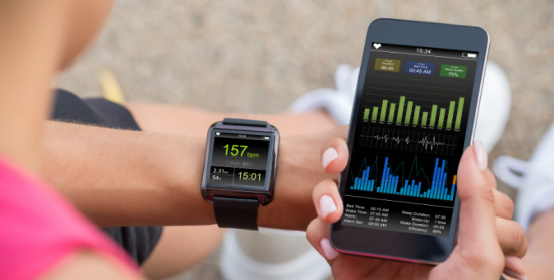
Today's medical tech has gone far beyond a clinic or hospital setting. Some of the most advanced devices available today are wearable, allowing users to continually monitor key metrics like blood oxygen, heart rate, blood glucose, and more. This allows users to take a more active role in managing their health, and lets doctors, nurses, and other healthcare professionals gain a more complete picture of each patient's daily experience and symptoms.
While the advent of devices like the FitBit and Apple Watch have allowed wearable medical tech to become very popular in recent years, the field continues to expand. Here are some of the latest advances in medical wearables:
For people who need to monitor their blood sugar, frequent blood draws and tests can be painful, annoying, and difficult to comply with. Modern glucose monitors allow people to continuously monitor their blood sugar in a virtually painless, less invasive way.
The FreeStyle Libre 3 by Abbott works using a tiny sensor placed just below the skin's surface. It uses interstitial fluid to monitor glucose, not blood. This latest model allows users to continuously monitor without having to scan themselves and will even send alerts when levels are off.
While the sensor may cause slight irritation at the insertion site, it's generally very well tolerated by users. Overall, it's less painful than a finger stick, and continuous monitoring means that users are more likely to comply with checking their blood sugar.
Heart rate monitors aren't really new—FitBits and Apple Watches are capable of keeping track of your heart rate during exercise, sleep, or even when you're just going about your day. Newer wearable tech can keep track of far more than just your heart rate, though.
New smart watches can detect irregularities in heart rhythm, respiratory rate, and blood oxygenation. This can help doctors detect patterns that may point to a serious medical condition and allows users to manage their symptoms more effectively.
Even if you don't necessarily need a wearable ECG, tracking your heart rate data can be a big help. A study of people who contracted COVID-19 found that 81% experienced alterations in heart rate and other metrics that often go ignored. Data like this could become very valuable for pre-symptomatic detection of illnesses.
For older people and their families, falls can be a never-ending source of anxiety. Seniors are more likely to suffer from balance issues and neurological conditions that make falls more frequent, as well as the loss of muscle mass and bone density that makes them dangerous. Roughly every eleven seconds, a person aged 65 or older is treated for a fall in the emergency room.
Attempts to mitigate falls aren't just for seniors, either. Children and adults with special needs can also be at risk. While it's important to prevent falls, it's equally important to know exactly when they happen. New smart watches can detect falls and send alerts, so carers can contact emergency services promptly.
In a survey of 2,000 people, six out of ten participants experienced long-term pain from exercise-related injuries. Overall, roughly 41% of gym users have been injured by exercise. If you don't have a trainer to help ensure that you're using the right form and engaging the right muscle groups, your risk of injury increases.
This can also help people recovering from injuries and illnesses through physical therapy. Athos' wearable sensors can show them exactly how their bodies are moving, so they and their therapists can make sure that they're targeting the right muscle groups for optimum recovery of their coordination, strength, and range of motion.
Athos has developed a way to help avoid this. Their Athos Training System consists of athletic wear with dedicated pockets for sensors. These sensors monitor muscle activity and motion detection, allowing users to know exactly what muscles they're using, and how. Not only could this help prevent injuries caused by poor form, it can also help make exercise more effective.
Not all wearable medical tech is intended to be worn by patients. the tech startup Augmedix has pioneered a novel way for physicians to use Google Glass. Physicians can wear their smart glasses during appointments, and they'll be automatically connected to a transcriber. The transcriber then gets a real-time audio and video feed of the appointment, and can take notes, update patient records, and more.
This is an important development. Transcribers are professionals that now the ins and outs of taking proper records. When they have to rely on handwritten or hastily typed notes, errors can happen. Augmedix's wearable tech can cut down on mistakes, ensuring better patient outcomes.
Nobody likes going to the doctor. For many people, that means either putting off treatment until they're experiencing severe problems, or noncompliance with treatment. Wearable medical technology doesn't just help doctors gather data outside of their clinic hours, they also help patients stay on top of their health so they can live better, healthier lives.